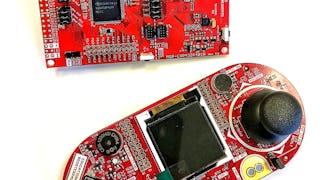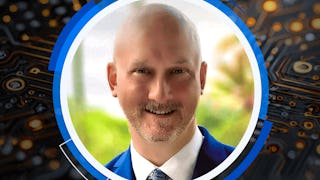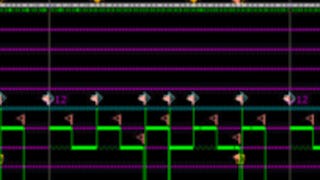Embedded Software and Hardware Architecture is a first dive into understanding embedded architectures and writing software to manipulate this hardware. You will gain experience writing low-level firmware to directly interface hardware with highly efficient, readable and portable design practices. We will now transition from the Host Linux Machine where we built and ran code in a simulated environment to an Integrated Development Environment where you will build and install code directly on your ARM Cortex-M4 Microcontroller. Course assignments include writing firmware to interact and configure both the underlying ARM architecture and the MSP432 microcontroller platform. The course concludes with a project where you will develop a circular buffer data structure.

Enjoy unlimited growth with a year of Coursera Plus for $199 (regularly $399). Save now.

Embedded Software and Hardware Architecture

Instructor: Alex Fosdick
53,879 already enrolled
Included with
(526 reviews)
What you'll learn
Describe relationship between ARM architecture and C-Programming memory interactions
Construct specialized embedded system data structures including circular buffers, LIFO Buffers, and Linked Lists
Identify techniques to manipulate memory
Skills you'll gain
Details to know

Add to your LinkedIn profile
4 assignments
See how employees at top companies are mastering in-demand skills

There are 3 modules in this course
Module 1 will introduce the learner to how software/firmware can interface with an embedded platform and the underlying processor architecture. Embedded Software engineers must be very knowledgeable about the architecture in order to write efficient and bug free code. This requires knowledge of processor architecture. memory systems, microcontroller peripherals and more advanced use of the compiler. This module will continue to enforce good software design techniques with a focus on portability and maintainability without reducing your hardware’s performance.
What's included
9 videos1 reading1 assignment
Module 2 will introduce the learner to more advanced firmware techniques as well move us into some hands on firmware for the microcontroller. We start by building our own memory access methods that will allow a programmer to manipulate peripheral memory bit fields to configure microcontroller peripherals and core architecture concepts. This will include more complex use of pointers for register definition files and function pointers for interrupt vector tables The module concludes with an in-depth look into the features of on-target debugging on a microcontroller and a hands-on example.
What's included
8 videos1 assignment
Module 3 will introduce the learner to efficient and maintainable ways of organizing data. Most microcontroller programs require some use of structured data in order to track and manipulate the control flow or data in a program. These can be as simple as unions, enumerations or structures, but can be more complex with the use of abstract data structures. While abstract data structures are often discussed in higher level software, there are many simple examples that are used frequently in embedded system software.
What's included
8 videos2 assignments
Instructor

Offered by
Explore more from Electrical Engineering

University of Colorado Boulder
 Status: Preview
Status: Preview Status: Free Trial
Status: Free TrialUniversity of Colorado Boulder
 Status: Free Trial
Status: Free Trial
Why people choose Coursera for their career




Learner reviews
526 reviews
- 5 stars
69.39%
- 4 stars
19.39%
- 3 stars
6.65%
- 2 stars
2.09%
- 1 star
2.47%
Showing 3 of 526
Reviewed on Jul 9, 2023
Great introduction and refresher for embedded software. It was properly outlined and well-paced.
Reviewed on Nov 23, 2020
This was excellent. The instructor is very clear and easy to understand. The hardware was never needed though?
Reviewed on Aug 17, 2021
Excellent explanation with use cases. Anyone with no or little knowledge in Embedded system can improve their skills.

Open new doors with Coursera Plus
Unlimited access to 10,000+ world-class courses, hands-on projects, and job-ready certificate programs - all included in your subscription
Advance your career with an online degree
Earn a degree from world-class universities - 100% online
Join over 3,400 global companies that choose Coursera for Business
Upskill your employees to excel in the digital economy
Frequently asked questions
To access the course materials, assignments and to earn a Certificate, you will need to purchase the Certificate experience when you enroll in a course. You can try a Free Trial instead, or apply for Financial Aid. The course may offer 'Full Course, No Certificate' instead. This option lets you see all course materials, submit required assessments, and get a final grade. This also means that you will not be able to purchase a Certificate experience.
When you enroll in the course, you get access to all of the courses in the Specialization, and you earn a certificate when you complete the work. Your electronic Certificate will be added to your Accomplishments page - from there, you can print your Certificate or add it to your LinkedIn profile.
Yes. In select learning programs, you can apply for financial aid or a scholarship if you can’t afford the enrollment fee. If fin aid or scholarship is available for your learning program selection, you’ll find a link to apply on the description page.
More questions
Financial aid available,

